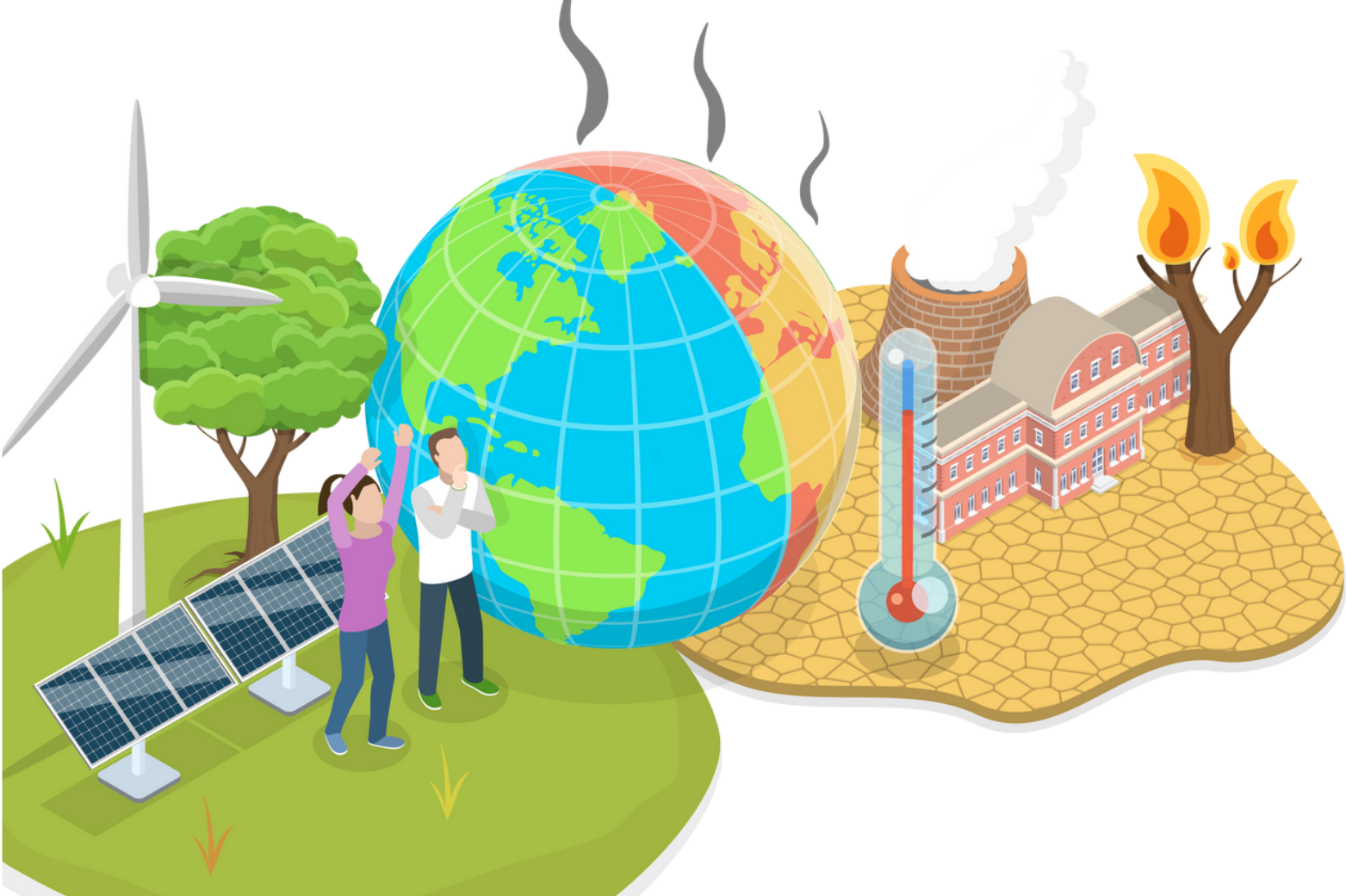Greenhouse Effect:
The greenhouse effect refers to the process where certain gases in Earth’s atmosphere trap heat, warming the planet. Human activities, such as burning fossil fuels, release greenhouse gases like carbon dioxide (CO2) and methane (CH4), intensifying this effect.

As a result, the concentration of CO2 in the atmosphere has surged from around 280 parts per million (ppm) before industrialization to over 410 ppm today.
Global Warming:
Global warming is the gradual increase in Earth’s average surface temperature due to human- induced emissions of greenhouse gases. Since the late 19th century, the Earth’s average surface temperature has risen by approximately 1.18 degrees Celsius (2.12 degrees Fahrenheit), primarily driven by these emissions.

This rise in temperature marks a significant departure from historical norms and has widespread implications for ecosystems and human societies.
Mitigation:
Mitigation involves efforts to reduce or prevent the emission of greenhouse gases to minimize the extent of climate change.Despite mitigation efforts, global CO2 emissions reached a record high of 36.8 billion metric tons in 2019, underscoring the ongoing need for action.
Climate Resilience:
Climate resilience refers to the ability of systems and communities to withstand, recover from, and adapt to the impacts of climate change.Investing $1.8 trillion globally in climate resilience measures from 2020 to 2030 could yield $7.1 trillion in benefits, according to the Global Commission on Adaptation.
tipping point:
A tipping point is a critical threshold where a system undergoes a sudden and irreversible change, potentially triggering cascading impacts.Arctic sea ice has declined at a rate of about 13.1 percent per decade since 1979, nearing a tipping point where summer ice could vanish entirely.
Renewable Energy:
 Renewable energy sources, such as solar, wind, and geothermal power, offer alternatives to fossil fuels with minimal greenhouse gas emissions. In 2020, renewable energy accounted for over 26% of global electricity generation, a figure expected to rise as technology advances.
Renewable energy sources, such as solar, wind, and geothermal power, offer alternatives to fossil fuels with minimal greenhouse gas emissions. In 2020, renewable energy accounted for over 26% of global electricity generation, a figure expected to rise as technology advances.
Carbon footprint:
A carbon footprint represents the total amount of greenhouse gases emitted directly or indirectly by an individual, organization, event, or product. The concept of a carbon footprint is essential for understanding and addressing climate change, as it provides a tangible way to measure and manage human-induced greenhouse gas emissions. By reducing our carbon footprint through lifestyle changes, energy efficiency improvements, and adoption of renewable energy sources, we can contribute to efforts to mitigate climate change and build a more sustainable future.
Ocean Acidification:
Ocean acidification occurs when the absorption of carbon dioxide from the atmosphere decreases the pH of ocean surface waters, posing significant threats to marine ecosystems.Since the industrial era began, the average pH of ocean surface waters has decreased by about 0.1, representing a 26% increase in acidity.
Climate Justice:
 Climate justice highlights the disproportionate impacts of climate change on marginalized and vulnerable communities, emphasizing the need for equitable solutions.Between 70 and 80 percent of people displaced by climate change are women, according to the United Nations.
Climate justice highlights the disproportionate impacts of climate change on marginalized and vulnerable communities, emphasizing the need for equitable solutions.Between 70 and 80 percent of people displaced by climate change are women, according to the United Nations.
adaptation:
Adaptation entails making adjustments to minimize the negative impacts of climate change on human societies, economies, and ecosystems. The World Bank estimates that by 2030, global adaptation costs for developing countries could range from $140 billion to $300 billion per year.

